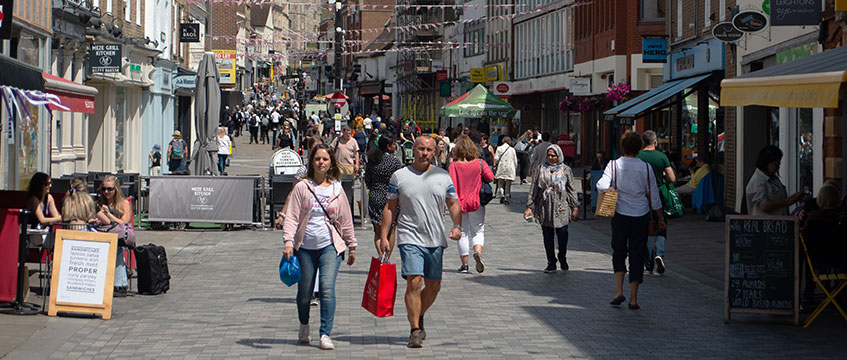High streets lag as London offices outperform
The UK’s retail real estate market continues to lag both the office and industrial markets, according to the RICS’ second-quarter UK Commercial Property Monitor.
Confidence in the market as a whole remained flat during the three months. The largest share of respondents (41%) viewed the market as being in the early stages of recovery, while 34% believed it has hit its lowest point.
Tenant demand across all sectors remained steady with net balance of +4% (RICS calculates the balance by taking the proportion of respondents reporting a rise minus those reporting a fall). By sector, the office and industrial categories showed net balances of +7% and +10%, respectively, reflecting a slight increase in occupier demand for both. In contrast, the retail sector had a net balance of -5%, which, while less negative than the previous -10%, indicated weak momentum in tenant demand.
The UK’s retail real estate market continues to lag both the office and industrial markets, according to the RICS’ second-quarter UK Commercial Property Monitor.
Confidence in the market as a whole remained flat during the three months. The largest share of respondents (41%) viewed the market as being in the early stages of recovery, while 34% believed it has hit its lowest point.
Tenant demand across all sectors remained steady with net balance of +4% (RICS calculates the balance by taking the proportion of respondents reporting a rise minus those reporting a fall). By sector, the office and industrial categories showed net balances of +7% and +10%, respectively, reflecting a slight increase in occupier demand for both. In contrast, the retail sector had a net balance of -5%, which, while less negative than the previous -10%, indicated weak momentum in tenant demand.
The disparity in performance between prime and secondary properties, as well as between London and other regions, continued to grow.
This trend was particularly evident in the office sector, where prime office rental expectations had a +45% net balance, while secondary offices showed a significant -32%, indicating an anticipated decline in rental income for these spaces.
In retail, prime retail rental expectations had a +10% net balance, while secondary retail rents had a negative outlook, with a net balance of -32%.
At the regional level, London significantly outperformed all other regions in terms of prime office property. The capital recorded a 68% net balance of respondents expecting prime office rents to grow, well above the 29%, 25% and 29% growth rates seen in the South, Midlands and North, respectively.
RICS’ senior public affairs officer Sam Rees said: “When it comes to commercial property, there remains a need to increase investment in retail and the high street.
“The government have talked about several ways to improve retail conditions, including introducing high street banking hubs, the revamping of long-term empty retail units, devolution and replacing business rates with a new system. These are all good proposals and, if combined with clarity on the use of MEES for commercial property, they could help the sector significantly.”
Senior economist Tarrant Parsons said: “Overall activity remains relatively subdued across the UK commercial property market, with conditions seen as generally flat in Q2. That said, respondents now feel the market is moving towards the early stages of an upturn following a challenging couple of years.
“The near-term path for monetary policy will be key to the outlook for CRE investment going forward, although hopes of an immediate easing in lending rates may be optimistic given still sticky services inflation. Away from the cyclical picture, a strong structural trend that continues is the outperformance of prime office markets compared with their struggling secondary counterparts. In particular, prime offices across London are seen delivering solid capital value and rental income returns over the coming 12 months.”
Photo © Maureen McLean/Shutterstock











